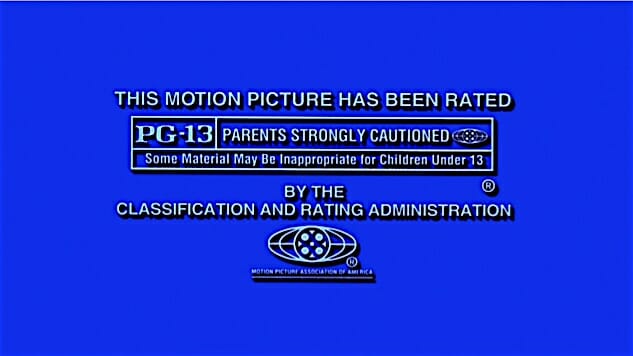Rating the MPAA Film Rating System at 50
“Celebrating” half a century of inconsistent self-censorship

Subjective declarations such as this one … that some content is “too important” to be labeled in accordance with the standards set forth by the MPAA and understood, trusted and relied upon by parents, undermine and negate the entire purpose of having the content rating system in the first place. — Statement from the Parents Television Council on news that Eighth Grade would be screening for free to young viewers despite its R rating.
::eyeroll:: —The rest of us
The Motion Picture Association of America’s film rating system, surprisingly, turned 50 this past month. It’s surprising because it’s worked its way so deeply into the fabric of society that you figure Woodrow Wilson came up with it, and yet your parents remember a time before it. At a venerable half a century, it’s worth it to ask why on Earth we still use a system that provides very little practical value to the parents it purports to help, and frustrates the visions of artists and the enjoyment of their patrons and audiences.
Voluntary Self-Censorship

Rated PG!
The rating board members who are parents, and neither gods nor fools, look at a movie and try to put a rating on there that the average parent would believe to be an accurate depiction of that film. —Jack Valenti, president of the Motion Picture Association of America for 38 years
The Motion Picture Association of America’s rating system arose from the ashes of the infamous “Hays Code,” the deeply troubling and almost certainly unconstitutional regulatory framework that governed films starting in earnest in 1934 and, by 1968, had faced litigation and public backlash. As the studio system was adapting to the rising prominence of television, more availability of foreign films, and a new generation of risk-taking filmmakers catering to a changing national mood, Hollywood in essence stepped up to voluntarily censor itself rather than be imposed upon by outside forces.
It’s important to remember that nothing about this system is legislated, enforced or adjudicated by any federal law. It’s entirely a voluntary construct of Hollywood, enforced only to the degree that basically every distributor, studio and theater chain adheres strictly to it.
The MPAA established the first ratings framework in 1968, establishing “G,” “M,” “R” and “X” ratings for films. 1970 saw the “M” rating adjusted to “GP” (later the current “PG” we all know and love). Steven Spielberg famously caught grief from a nation of parents who balked at the two 1984 films Indiana Jones and the Temple of Doom, which he directed, and Gremlins, which he produced, after their PG ratings failed to warn parents just how violent and dark the films were. Spielberg successfully lobbied Valenti to introduce the PG-13 rating, for which Spielberg has expressed some pride. (Not, I should say, without due cause—it would be an illuminating rating if the classifications weren’t totally inconsistent.)
“NC-17” was later introduced as a replacement for “X,” a move which was intended to distinguish mature, unsparing content from pornography. “X” has not been an actual rating of the MPAA since 1990, though pornographic films happily declare themselves X-rated. They may as well have kept it, though: Blockbuster Video (remember them?) declared it would not stock NC-17-rated films for rental and most theater chains declined to screen the movies. More infuriatingly, 17 is no longer even the age at which you are allowed to view an NC-17 feature, since it now means “No One 17 or Under Admitted,” meaning you must wait until you are 18.
In theory, ratings of G (for General Audiences), PG (Parental Guidance Suggested), PG-13 (Parents Strongly Cautioned), R (Restricted) and something equivalent to NC-17 that isn’t lying to you by its very designation should be enough to capture a general idea of how a movie might play to youngsters. Unfortunately, those ratings do not do that.
-

-

-

-

-

-

-

-

-

-

-

-

-

-

-

-

-

-

-

-

-

-

-

-

-

-

-

-

-

-

-

-

-

-

-

-

-

-

-

-











































